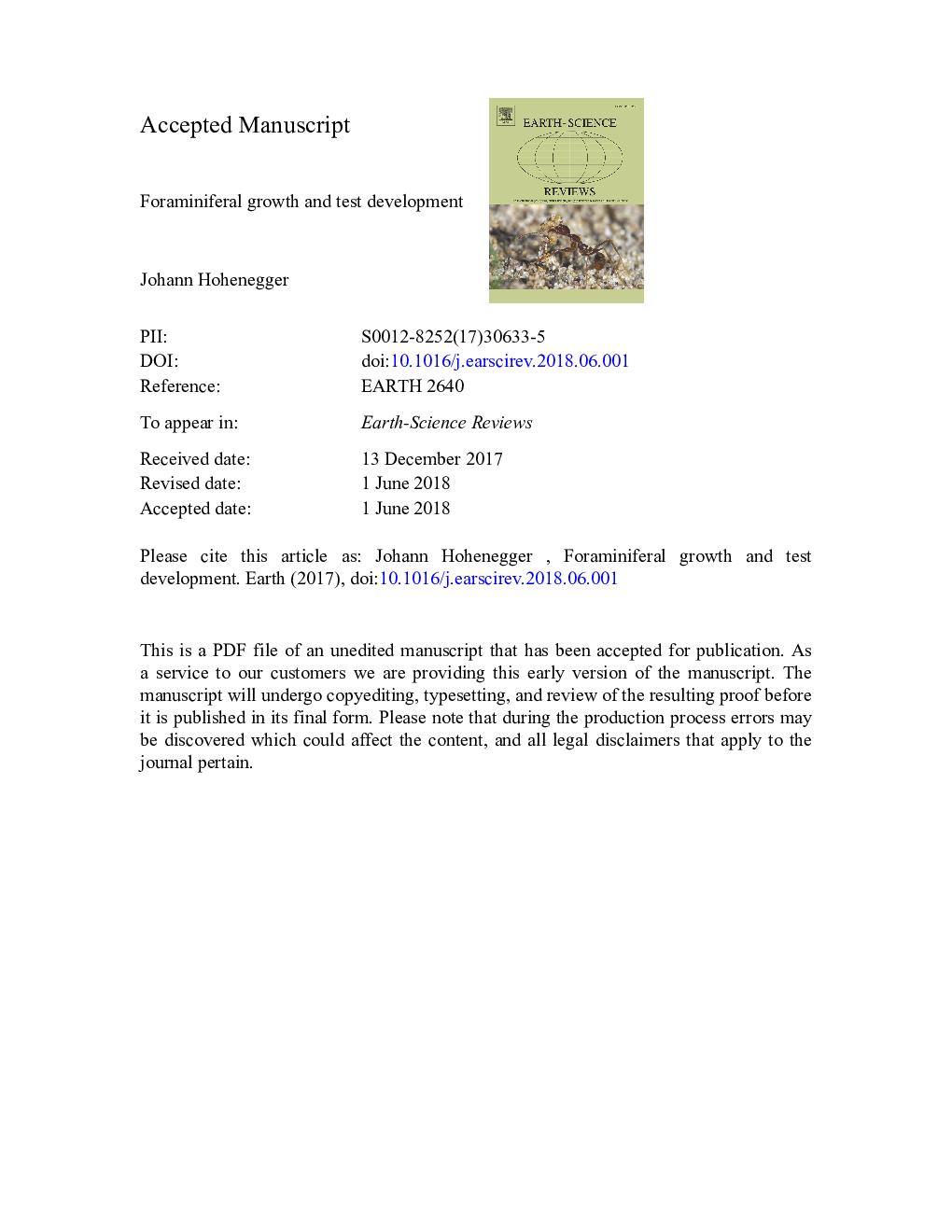| کد مقاله | کد نشریه | سال انتشار | مقاله انگلیسی | نسخه تمام متن |
|---|---|---|---|---|
| 8912876 | 1639918 | 2018 | 68 صفحه PDF | دانلود رایگان |
عنوان انگلیسی مقاله ISI
Foraminiferal growth and test development
ترجمه فارسی عنوان
رشد و توسعه فرامینیفر
دانلود مقاله + سفارش ترجمه
دانلود مقاله ISI انگلیسی
رایگان برای ایرانیان
کلمات کلیدی
رشد سلول فرامینفر، نرخ ساختمان اتاق، طول عمر، توسعه تست، توابع رشد، مسیرهای فیلوژنتیک،
موضوعات مرتبط
مهندسی و علوم پایه
علوم زمین و سیارات
زمین شناسی
چکیده انگلیسی
Growth of multichambered foraminifera can be studied by investigation of chamber volumes. This approach is applicable to the vast majority of living and fossil species. Cell growth is represented by the test volume, whereby chamber volumes exhibit the increase in cell volume by growth stages. Two models fit foraminiferal growth, the unlimited linear and the limited sigmoidal function. The growth stage, in which reproduction begins, is represented in sigmoidal growth by the point of inflection; this stage cannot be determined in the unlimited linear growth model. The timing of chamber building is apparently correlated with cell growth, thus the “chamber building rate” remains constant in linearly growing cells whereas it decreases and ultimately approximates zero in limited growth. Longevity can be estimated for living individuals with sigmoidal growth by the inverse of the chamber building function at the inflection point of the cell growth function. Calculating the mean chamber building function for a species inhabiting a distinct geographical region, its inverse can be used in this region to estimate the individual lifetime based on the final growth state (= chamber number). Deviations of observed chamber volumes from theoretical values determined by the chamber building function can be irregular or oscillating. Periods of oscillating functions in larger foraminifera may point to tidal, lunar and seasonal cycles. Based on the determination of seasonal oscillations in the test by stable isotopes, lifetime â¥1â¯year can also be estimated for fossil species. The development in foraminifera is expressed in a huge variability of test forms with different wall textures depending on functional and constructional aspects. The historical-phylogenetic approach enables a differentiation into three groups, the Tubothalamea, Globothalamea and the Nodosariids. Within the Tubothalamea and Globothalamea, several subgroups feature symbiont-bearing foraminifera with large tests designed to optimize the surface/volume ratio allowing the symbiotic microalgae to occupy an optimal position near the test surface.
ناشر
Database: Elsevier - ScienceDirect (ساینس دایرکت)
Journal: Earth-Science Reviews - Volume 185, October 2018, Pages 140-162
Journal: Earth-Science Reviews - Volume 185, October 2018, Pages 140-162
نویسندگان
Johann Hohenegger,
